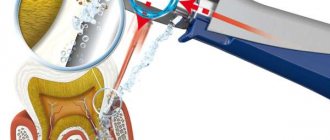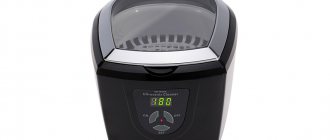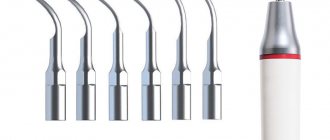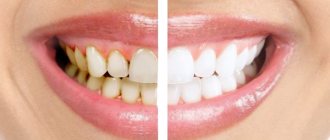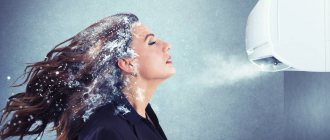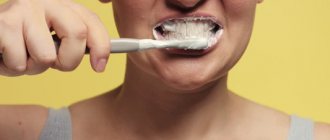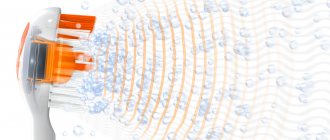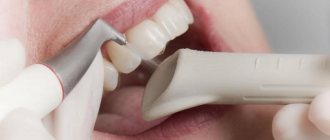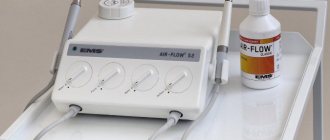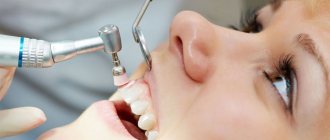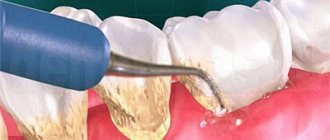The deposits on the teeth that a regular brush does not remove gradually thicken and harden, turning into tartar. This destroys the enamel and prevents damage from being noticed in time. As a result, caries develops, which can develop into more serious diseases. Complications also affect the gums - bleeding and inflammation appear. Regular dental cleanings reduce the likelihood of tooth decay and maintain a beautiful, healthy smile.
Previously, plaque was removed using a curette, but this injured delicate tissues. Modern gentle methods in dentistry are ultrasonic cleaning or Air Flow. They are recommended not only as a disease prevention, but also for preparing teeth before treatment, installation of crowns, implants or braces.
How to do professional ultrasonic cleaning
Until about 10-15 years ago, dentists removed hard plaque using curettes. These are hand tools, very sharp and sharpened at the ends. It is clear that the procedure was painful and injured the enamel and gums. The layer of “living” tissue that is removed with curettes is 5-25 microns. This means that each time the enamel becomes thinner and becomes more and more sensitive.
During gentle ultrasonic cleaning, only 0.1 microns of tissue is removed. It is carried out using an ultrasound machine, which is now installed in almost every dentistry and clinic. A special scaler attachment produces silent vibration vibrations with a frequency of 16 - 45 thousand Hz. The doctor adjusts the amplitude of vibrations to remove different types of plaque, including in hard-to-reach places.
Ultrasonic waves eliminate not only visible yellow plaque, but also subgingival bacterial deposits that accumulate in periodontal pockets and trigger the inflammatory process.
Ultrasound, like a drill, crushes tartar into tiny particles. The resulting stone dust is removed using a mouth “vacuum cleaner”, then the enamel is washed with a stream of water. At the very end, the surface of the teeth is ground and polished using professional nylon brushes and abrasive pastes. The entire session lasts about 30-40 minutes. And if there are too many stones, the procedure takes about an hour.
Ultrasound or Air Flow: which is better?
A common mistake is to consider the two types of professional cleaning separately: for better results they are used in combination. Ultrasound removes complex surface contaminants, Air Flow cleans hard-to-reach areas and polishes enamel. After the procedure, it responds well to remineralization, so at the end of professional oral hygiene, the teeth are polished with a brush and coated with fluoride-containing preparations.
To maintain a healthy smile, dentists recommend professional teeth cleanings periodically - once every six months. With regular visits to the doctor and proper hygiene, deposits do not have time to harden and turn into stone. In such cases, the attending physician may suggest doing without ultrasound and limiting yourself to only the Air Flow procedure or creating an individual schedule for sanitation of the oral cavity.
Pros and cons of ultrasonic cleaning
The method is excellent for the prevention of caries and inflammatory gum diseases - gingivitis, periodontitis, stomatitis. It is recommended for all patients. This is why ultrasonic teeth cleaning has become so popular and in demand:
- safe removal of tartar without damaging the enamel;
- removal of subgingival plaque, which causes bleeding and inflammation of the gums;
- Ultrasound sterilizes the tooth surface and destroys pathogenic microflora;
- eliminating bad breath;
- lightening the enamel to a natural shade - by 1-2 tones.
Ultrasound or Air Flow: advantages and disadvantages
Ultrasound cleaning takes place without direct contact with the tooth surface, which makes this hygiene method safe for enamel. Ultrasound creates vibration - elastic waves that create vibrations in dental stone, mechanically destroying it. Point exposure allows you to remove even old stones, making the method attractive in advanced cases. Advantages of ultrasound:
- gentle removal of hardened deposits;
- prevention of inflammatory diseases (periodontitis, gingivitis);
- reduction of manifestations of halitosis;
- bleaching to natural enamel color.
The effectiveness of ultrasonic cleaning in destroying hard deposits also has disadvantages: vibrations can destroy solutions that are used to attach crowns or implants. In such cases, preference is given to the more delicate Air Flow. Another feature of ultrasonic cleaning is the potential discomfort of the procedure for sensitive teeth, but this can be easily eliminated with minimal anesthesia.
Cleaning with a mixture of water and Air Flow pressure abrasive gently and thoroughly removes soft deposits on the surface of the tooth and in hard-to-reach areas - fissures and interdental spaces. The procedure does not cause discomfort or pain and does not injure the gums. Obvious advantages of this method:
- cleaning teeth from soft plaque;
- prevention of oral diseases;
- whitening by several tones;
- Possibility of use with orthodontic structures.
Air Flow has practically no disadvantages: these include only the inability to remove subgingival deposits. It will not cure tartar, but there is no such task: a hygienic procedure prevents its appearance.
Care after ultrasonic teeth cleaning
After the procedure, a feeling of freshness and cleanliness appears, the enamel brightens, becomes perfectly smooth, and pleasant to the touch. To maintain the results as long as possible, it is recommended to carefully care for your teeth, brushing them after every meal or at least 2 times a day.
On the first day, slight sensitivity is possible, so it is better to avoid foods that are too cold or hot. It is also recommended to limit the intake of coloring products (coffee, tea, wine) for a couple of days so that the whiteness of the enamel will please you for a long time.
Dentists advise purchasing a new toothbrush. After ultrasound treatment, the gums are slightly irritated and vulnerable to infection. And your old brush can serve as a source of harmful bacteria.
Application of anesthesia
When brushing, the surface of the tooth is affected, and if the enamel is thinned or damaged, unpleasant, slightly painful sensations may occur during the procedure. In people with increased tooth sensitivity, pain is more severe, especially when removing stones from subgingival pockets. To reduce these sensations, dentists use local anesthesia.
For people with hypersensitive teeth, cleaning is done under local anesthesia.
Most often, such anesthesia involves applying an anesthetic gel to the gums. The effect manifests itself in a matter of minutes and the doctor’s manipulations become completely painless. All that remains are tactile sensations, which also do not cause much concern. Anesthesia in the form of an injection when brushing teeth is used less frequently, mainly for those patients who are terrified of dentists or suffer from dental hypersensitivity.
- It hurts to chew on a tooth
There is another method of pain relief that has proven itself well. We are talking about the use of nitrous oxide - a gas, when inhaled, the patient feels slight relaxation and euphoria, but at the same time is in complete control of himself. This anesthesia is indicated for those who are afraid of dental procedures, susceptible to stress and depression, as well as those who suffer from hypersensitivity, but have contraindications to the use of local anesthetics or general anesthesia.
Nitrous oxide sedation machine
Important! This method cannot be used for serious mental disorders, problems with the respiratory tract, or in the first months of pregnancy.
How to clean teeth with this anesthesia:
- a mask is placed on the patient’s nose, through which oxygen begins to flow;
- then nitrous oxide is mixed with oxygen in a certain concentration;
- the gas begins to act in 2-3 minutes, and the dentist can begin the necessary manipulations.
Nitrous oxide is supplied through a special mask
During the process of brushing teeth, the doctor can change the gas concentration, guided by the patient’s reaction to his actions. In addition to the fact that nitrous oxide has a relaxing effect, it also helps reduce the gag reflex that many people experience during dental procedures. After completing the procedure, the mask is removed, and all sensations return to normal almost instantly.
Contraindications to ultrasonic teeth cleaning
Although ultrasonic teeth cleaning is recommended for all patients, there are still contraindications:
- cardiac arrhythmia and other serious ailments of the cardiovascular system;
- presence of a pacemaker;
- chronic asthma, bronchitis;
- exacerbation of any respiratory diseases;
- serious infectious diseases - hepatitis, tuberculosis;
- childhood and adolescence.
Unfortunately, ultrasonic cleaning is not suitable for patients who have dental implants and orthopedic structures in the mouth. The fact is that vibrations of ultrasonic waves can disrupt the integrity of some products. This happens extremely rarely, but still not worth the risk. In this case, an alternative method is used - Air Flow abrasive cleaning.
Is it painful to undergo oral and dental hygiene at the dentist?
Many people are afraid to visit the dentist and experience strong negative emotions even before undergoing such simple procedures as dental and oral hygiene. In this case, there is no need to be afraid: ultrasonic cleaning, polishing and remineralization - all these activities do not cause pain!
However, if you have increased tooth sensitivity, deep periodontal pockets will have to be cleaned - local anesthesia can be given, which completely removes all painful and unpleasant sensations during dental and oral hygiene.
And our dental clinic in Moscow - “Firadent” is ready to offer you two innovative services - dental and oral hygiene under sedation, that is, in a dream, as well as teeth cleaning under a microscope!
Is it possible to do ultrasonic cleaning at home?
Unfortunately, it is impossible to install a scaler at home and do ultrasonic cleaning of your teeth yourself. This should be done by a specialist. But there is an alternative option - buy an ultrasonic toothbrush. It has a special mechanism and a conductor inside the handle that produce vibrations. This is the so-called “soft ultrasound”, which destroys pathogenic microflora. This device removes plaque 200% more effectively than a regular toothbrush. It’s just that it’s unlikely to be able to cope with massive tartar that has accumulated on your teeth for years. Therefore, it is still recommended to consult a dentist before purchasing.
Price for professional dental and oral hygiene in dentistry
To find out the exact price of professional dental and oral hygiene services, you will need to come to the clinic and undergo an examination by a dentist. This is important because the type of teeth cleaning will be determined based on your individual characteristics. Perhaps you have contraindications for some type of cleaning, or in your case a certain technology will work optimally.
If you want to find out the maximum useful details not only about the cost of a professional oral hygiene procedure, but also about the stages of its implementation, the doctors of our dentistry in Moscow “Firadent” will be happy to help you!
You can get a detailed free consultation from our specialists at any time convenient for you: just contact us by phone number and make an appointment!
"Firadent" - we will help make your teeth healthy and your smile bright and attractive!
When not to do laser cleaning?
A-Medic Clinic is a professional dentistry, so our specialists do not remove tartar if the patient has contraindications. To do this, before the procedure, an examination of the oral cavity is carried out, and if concomitant systemic diseases are suspected, a diagnosis is prescribed.
Laser cleaning is not recommended for patients who have contraindications:
- periodontitis or endocarditis;
- AIDS or hepatitis;
- asthma or tuberculosis.
Patients can receive a refusal from a specialist:
- under the age of 18;
- have a pacemaker;
- female during pregnancy or lactation;
- undergoing a period of treatment for malocclusion with braces (cleaning is done first);
- with installed implants or a large number of fillings;
- with sensitivity to ultrasound.
The procedure is also impossible during the development of ARVI, caries, sore throat or pharyngitis.
About the procedure
Tartar is a plaque that, as a result of prolonged presence on the enamel, has become hard.
Such stone has such a strong adhesion to teeth that it is impossible to remove it with toothpaste and a brush. To clean enamel in dentistry, professional methods and products are used. The cleaning technology involves non-contact manipulation, which prevents mechanical damage and infection. Under the influence of high temperatures of infrared radiation, all particles of moisture are removed from pathological formations, and bacteria die. The laser not only cleans the enamel, but also polishes and whitens it.
The price for laser teeth cleaning from tartar depends on the number of teeth affected by hard plaque. Laser cleansing is not a cheap procedure because the procedure has many advantages over other methods.

